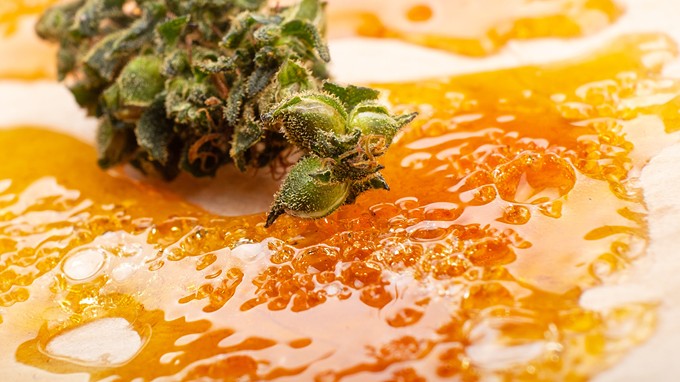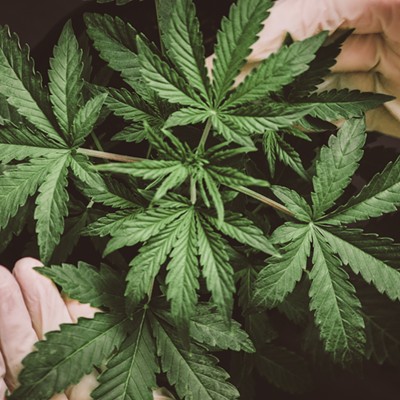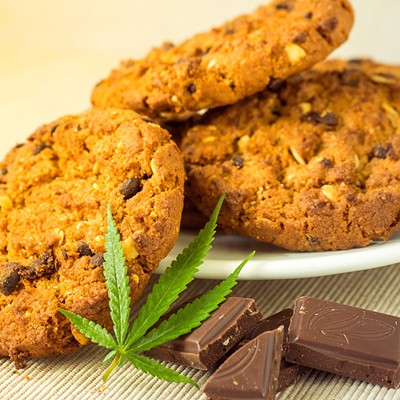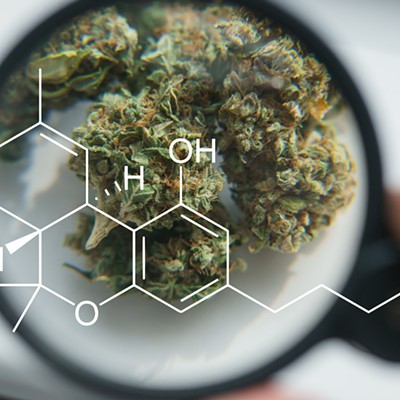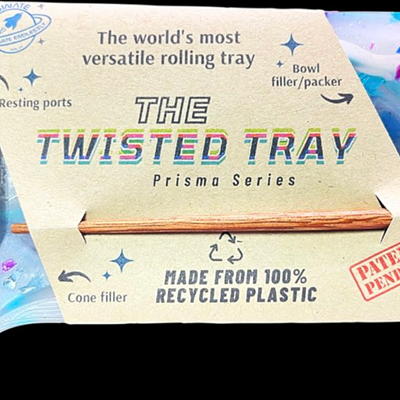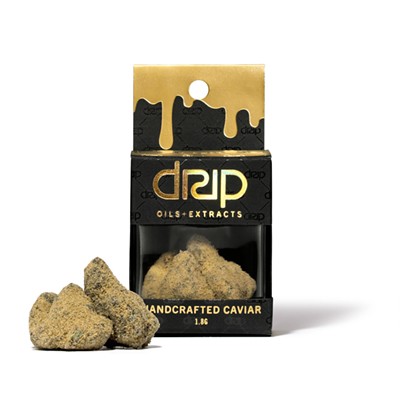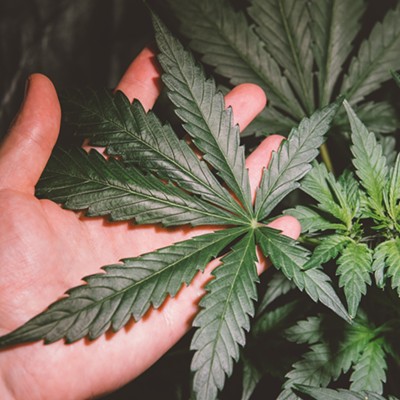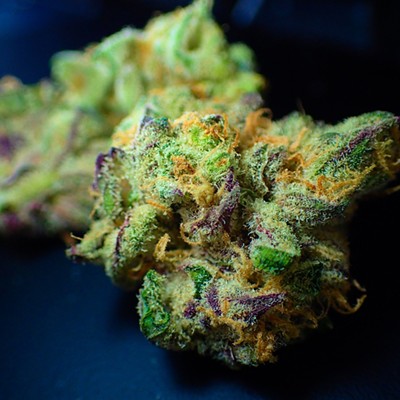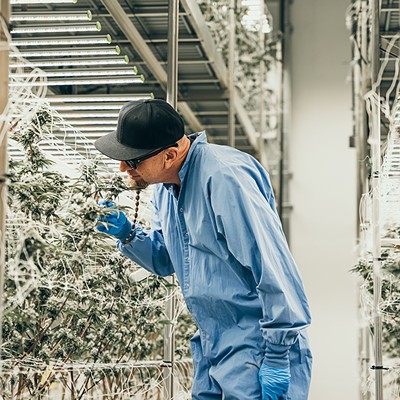As the cannabis industry continues to boom, consumers are met with an ever-changing lexicon of jargon.
Let’s break down two key players within the world of cannabis concentrates: live resin vs. distillate. Both are potent forms of cannabis extracts that are consumed by vaping or dabbing. However, they possess a myriad of differences that can help determine which one is right for you.
Distillate — created from cannabis that has already been dried and cured — is known for its high THC content, with potency levels that can reach the upper 90s.
The plant matter is then extracted from the cannabis flower to purify the desired cannabinoids, such as THC. At this point in the extraction process, compounds such as fats, lipids and chlorophyll are removed through a process known as winterization, where the extract is mixed with ethanol, and then placed in a cold environment for at least two days.
The impurities begin to separate, and the mixture is filtered to remove the ethanol. And boom. A thick and potent cannabis oil, the color of honey, is born.
Distillate tends to be a bit more cost effective when compared to other cannabis concentrates. It’s geared toward creating a cannabis product that is as potent as possible. Distillate tends to be a bit more discreet in regard to its smell, and is perfect for anyone looking for a high-potency product. But while distillate succeeds in delivering THC oil in its purest form, there is a cardinal trade off to be aware of.
Distillate is extracted at high temperatures that burn away the terpenes from the cannabis plant. And those terpenes? They’re pretty savvy. Not only are they responsible for delivering specific flavors and tastes but can be unique in amplifying the effects of a cannabis strain.
Some cannabis brands reintroduce terpenes into the distillate oil to enhance the flavor and aroma of the strain, but this is where live resin comes in.
Live resin shines in its ability to preserve a rich terpene content. Live resin is produced from fresh frozen cannabis, which is done to preserve the plant’s chemical compounds and terpenes. The extraction process is similar to distillate but is done at a lower temperature to further preserve those compounds. Because live resin is less refined than distillate, they contain a robust variety of cannabinoids and terpenes.
While terpenes are not a psychoactive component of THC, they do play an integral role in the overall effect of a particular strain of cannabis.
And of course, this wouldn’t be a real cannabis article if there was no mention of the entourage effect — the theory that all properties of the cannabis plant work in harmony to deliver a wider scope of benefits.
Live resin may encourage said entourage effect, thanks to its preservation of terpenes and cannabinoids that are unique to a particular strain.
Some like to compare live resin as the cannabis concentrate that is most like smoking actual flower, in part because of its flavor, but also because of the quality of the high. This can be an attractive quality for those looking for a substitute for smoking flower. Potency levels on live resin products may not always be able to compete with the levels that distillate products boast. But what you lose in THC potency, you gain in a rich feast of terpenes and cannabinoids.
Both distillate and live resin have their significant roles within the cannabis industry. Everyone has a preference that is unique to them; and that is completely OK. And it doesn’t help that the marketing surrounding the two is packed with confusing inconsistencies. Some brands offer 100% live resin, some offer a mix of live resin and distillate, and some have distillate with live resin terpenes.
So, whatever you choose, I hope it’s delightful.

